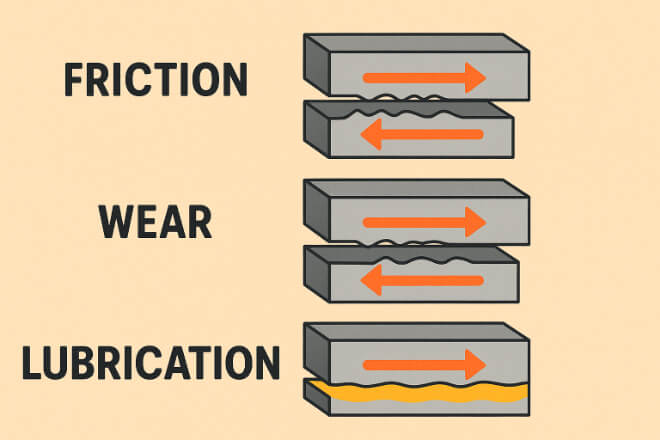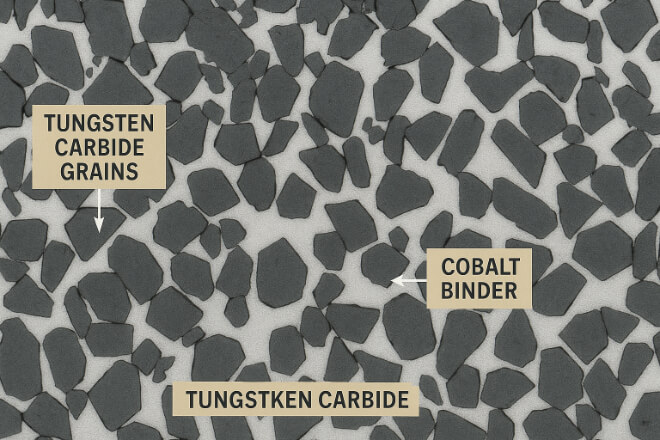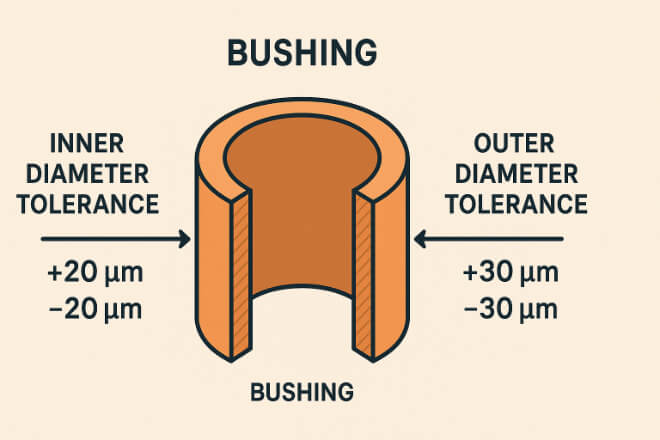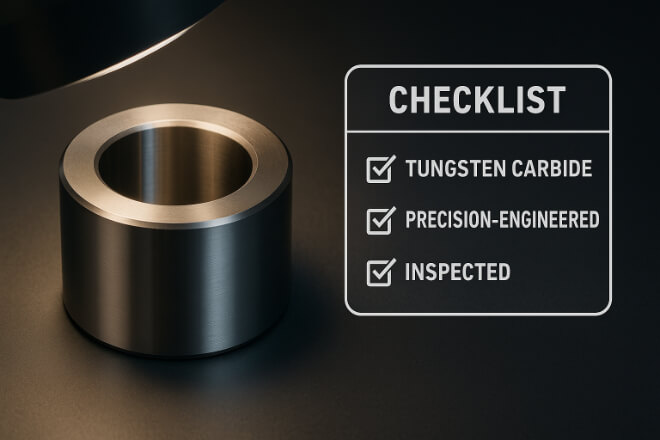Stress, Load, and Thermal Expansion Analysis in Tungsten Carbide Bushings

Tungsten carbide bushings are widely used in pumps, compressors, turbines, and mechanical seals — where they must handle high pressure, speed, and temperature. To work reliably, these bushings must maintain their shape, strength, and fit under stress, load, and temperature changes. If not properly designed or analyzed, they may crack, deform, or seize, leading to equipment failure and costly downtime. This article explores how stress, mechanical load, and thermal expansion affect tungsten carbide bushings — and how proper analysis ensures long-lasting performance. Understanding the Mechanical Behavior of Tungsten Carbide Tungsten carbide (WC) is known for being extremely hard and wear-resistant, but it behaves differently from steel or bronze. It is […]
Tribology and Friction Behavior of Tungsten Carbide Bushings

In modern mechanical systems, friction control plays a key role in efficiency and durability. Whether in pumps, compressors, or turbines, every moving part relies on bushings or bearings to reduce wear and maintain stability. Among many materials used, tungsten carbide bushings stand out for their exceptional tribological performance — the science of friction, wear, and lubrication. Understanding the tribology and friction behavior of tungsten carbide is not just for materials scientists. For engineering managers and procurement teams, this knowledge helps in choosing bushings that can handle extreme pressure, temperature, and corrosive media — while reducing downtime and maintenance costs. This article explains what tribology means, how it relates to tungsten […]
How Microstructure Affects the Performance of Tungsten Carbide Bushings

The microstructure of tungsten carbide bushings plays a key role in determining how well they perform under wear, heat, and pressure. While many buyers focus on grade codes like YG6 or YG8, the real story lies inside — in the arrangement of carbide grains and binder metal. For decision-makers in industries such as oil & gas, pumps, compressors, and precision machinery, understanding carbide microstructure helps make better sourcing and design decisions. The right microstructure can mean longer service life, smoother operation, and lower total cost of ownership. This article explains how microstructure is formed, what components it includes, and how it affects key properties like hardness, toughness, and corrosion resistance. […]
Dimensional Tolerances and Surface Finish in Tungsten Carbide Bushings

When engineers select tungsten carbide bushings for pumps, compressors, or turbines, they often focus on hardness and wear resistance. But two equally critical parameters are dimensional tolerance and surface finish. These two factors determine how well the bushing fits the shaft, how smoothly it operates, and how long it lasts. Even a small deviation — a few microns off — can cause excessive wear, vibration, or leakage. This article explains what tolerances and surface finishes mean, how they affect bushing performance, and what specifications decision-makers should look for when sourcing from carbide suppliers. What Are Dimensional Tolerances? Dimensional tolerance defines how much variation is allowed from a specified dimension during […]
How to Evaluate Supplier Quality for Tungsten Carbide Bushings

When sourcing tungsten carbide bushings, quality is not just about the product — it’s about the supplier behind it. A good supplier can ensure consistent performance, fast delivery, and long-term reliability. A poor supplier, on the other hand, can lead to production delays, early wear, or even equipment damage. For decision-makers in oil & gas, marine, power, and industrial machinery sectors, choosing a high-quality carbide bushing supplier is a critical step toward reducing downtime and maintaining system performance. This article explains how to evaluate supplier quality, what factors matter most, and how to verify that your vendor can deliver carbide bushings that truly meet your technical and operational needs. Why […]
